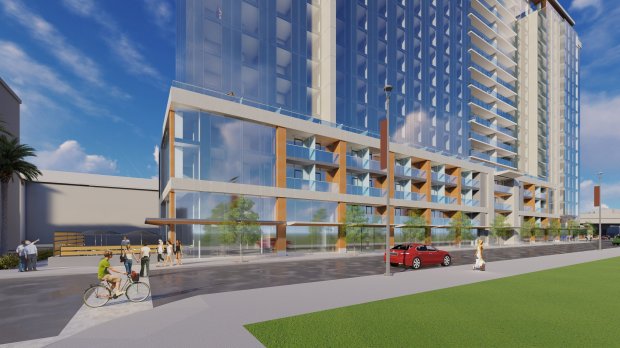On Tuesday, San Jose’s City Council considered a proposal to add to the zoning code a new section for Co-Living developments downtown. The Co-Living housing model has become popular in other cities around the country as a high-density response to the need for a range of housing types at different price points in urban cores.
In San Jose, San Francisco based Starcity is proposing a large apartment building housing nearly 800-beds. The Co-Housing category can cover a range of different models, but the basic idea is that each floor would contain small, personal bedrooms that share a common kitchen and living space. Some bedrooms would have private baths, and some would share bathrooms. The developments are “amenity rich,” with extras ranging from swimming pools and movie theaters, to linen services.
The main issues considered by council were laid out in the staff presentation. How much parking is appropriate? How much room should there be for bike storage? And, perhaps the central issue, how are these new “units” going to fit into the city’s existing inclusionary housing programs, which require that 15% of new units be made affordable to lower-income households?
As public comment opened it became clear that there was significant excitement about Co-Living as a new opportunity for San Jose. As expected, one area of concern was an effort to increase parking requirements beyond those proposed by staff, raised in a Memo from Mayor Liccardo and a number of council colleagues. The other major area of spirited discussion revolved around staff’s position that the new developments comply with the City’s Inclusionary Housing Ordinance that requires developers to set aside 15% of the new units at affordable rents for lower-income households, or pay a per-unit fee. While many speakers and some councilmembers held the co-housing model up as naturally occurring affordable housing,SV@Home pointed out that the “units” are not really affordable: they are not rent-restricted, and often charge rents well beyond the reach of lower-income households. The representative of Starcity explained to council that their goal was to come in at 10-20% below the current market for efficiency apartments, which he reported was about $2,500 for new construction in the current market.
Council voted unanimously to approve the new Co-Housing zoning category, and include the new projects under the Inclusionary Housing Ordinance as recommended. However, there was agreement that these required affordable units and in lieu fees should be discussed in more detail as part of the planned review of the Inclusionary Housing Ordinance scheduled for later in the year. A lot is at stake here. We will keep you informed.
Tuesday was a very busy day for housing in San Jose – with the afternoon meeting blending into the evening meeting, which lasted until just before midnight. See our posts on Safe Parking, Stevens Creek Promenade, and the Kelsey for more information.
